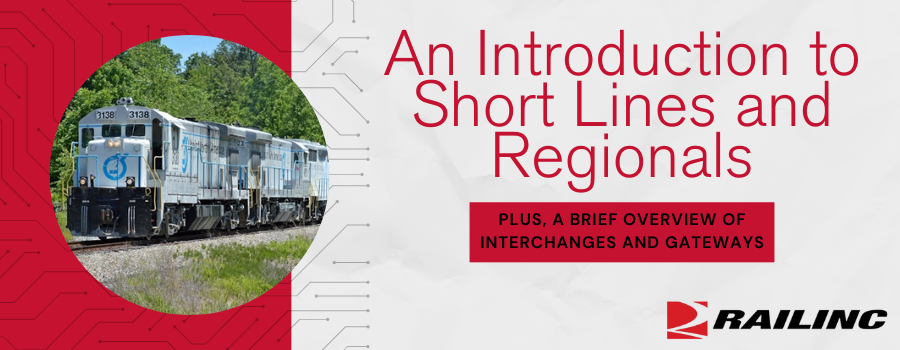
As mentioned in our previous blog, An Introduction to Class I Freight Railroads, the North American freight rail network is operated by seven Class I railroads, 22 regional railroads and over 580 short line railroads. The latter two are often referred to as “regionals” and “short lines” and are represented by the American Short Line and Regional Railroad Association. You may also see them referenced as Class IIs and Class IIIs. Short line is often shortened to shortline; while both are technically correct, Railinc uses the two-word version.
Most regionals and short lines were created when larger railroads merged or sold their cars prior to the 2000s. They service around 30 percent of North America but have less than 10 percent of the total North American freight rail employees and revenue.
Where the Class Is provide long-haul service, the regionals and short lines provide first-mile and last-mile service, rail service in particular regions, and interchanges at gateways.
What are Interchanges and Gateways?
Interchanges refer to railroads transferring freight cars from other companies over their lines. Shippers may need to transfer their cargo to ship or truck if the point of origin and final destination are not served by the same railroad. Instead, regionals and short lines come in to take the cargo to its ultimate destination.
Interchange locations with more than three railroads are called gateways. Chicago is one of these—around 25 percent of rail traffic originates, terminates or interchanges here. Other important gateways include Kansas City, St. Louis, Memphis and New Orleans.
What Does Railinc Do for Regionals and Short Lines?
Railinc’s Clear Path® System and Interline Service Agreement (ISA) Repository exist for gateways and other interchanges. Clear Path provides a quick and easy reference of inbound and outbound trains – similar to an arrivals and departures board at an airport – and the ISA Repository enables any railroad to enter into an interchange agreement with a partner railroad. ISA agreements are particularly useful when a Class I does not service a particular region and instead partners with a regional railroad to extend their reach.
Our Interline Settlement System® (ISS) provides a centralized process for railroads to negotiate and agree upon the sharing of revenue generated for a movement when two or more railroads are involved in a shipment’s route. This is most useful when short lines and regionals participate in first-mile and last-mile rail service agreements and interchanges with Class Is.
Railinc also provides insight into carloads and freight movements via the monthly Short Line Index and quarterly Umler® Index, available on the Railinc Blog.
Umler®, Interline Settlement System®, and Clear Path® are registered trademarks of Railinc Corp.
